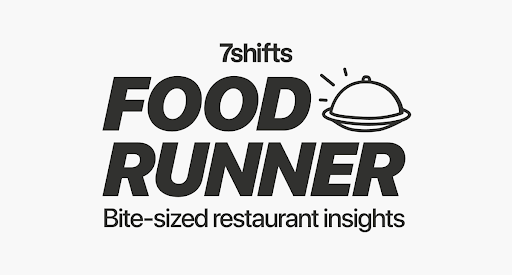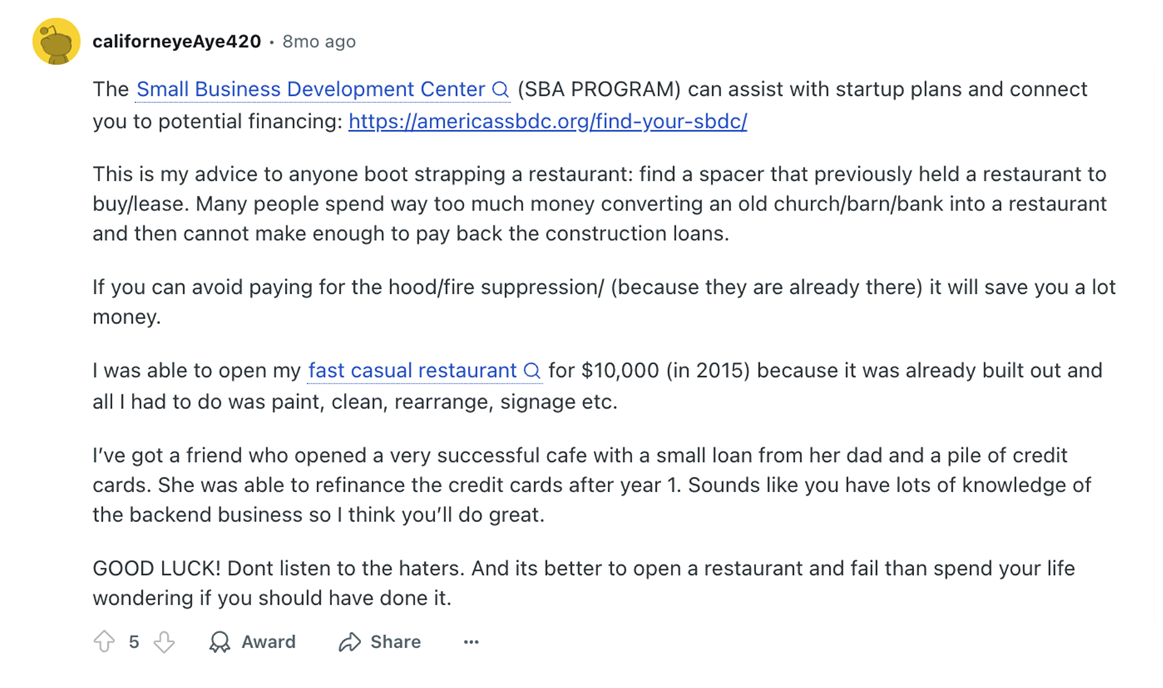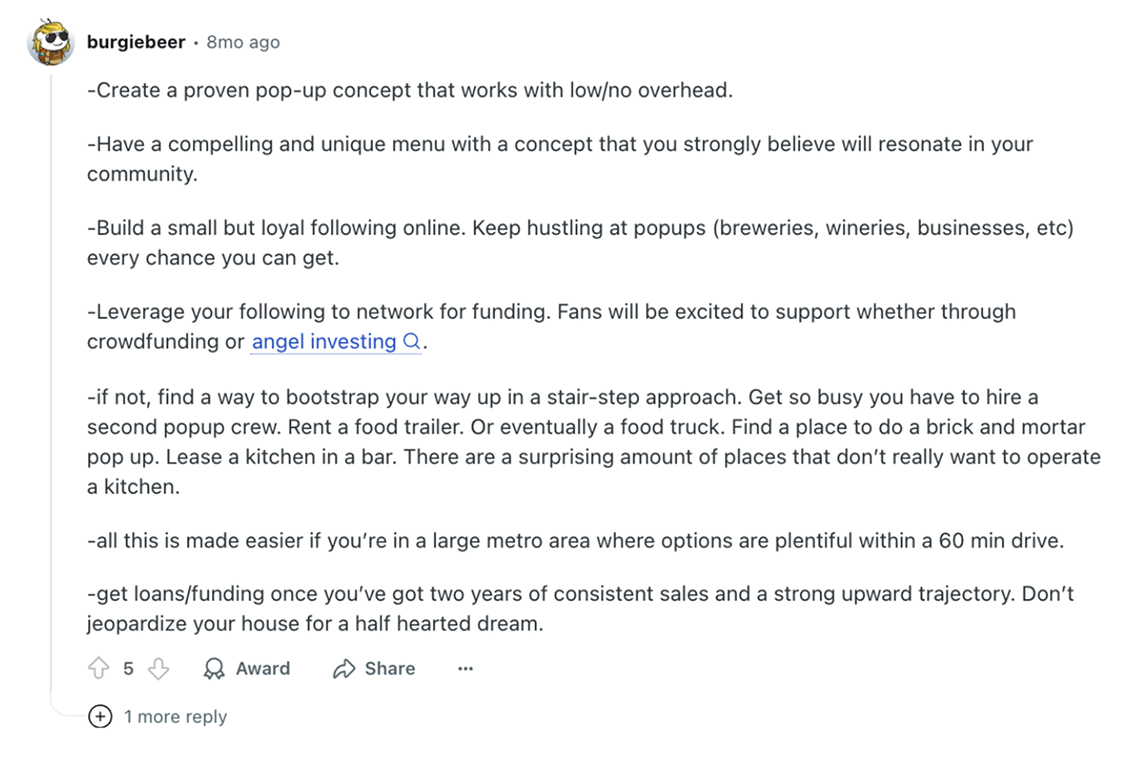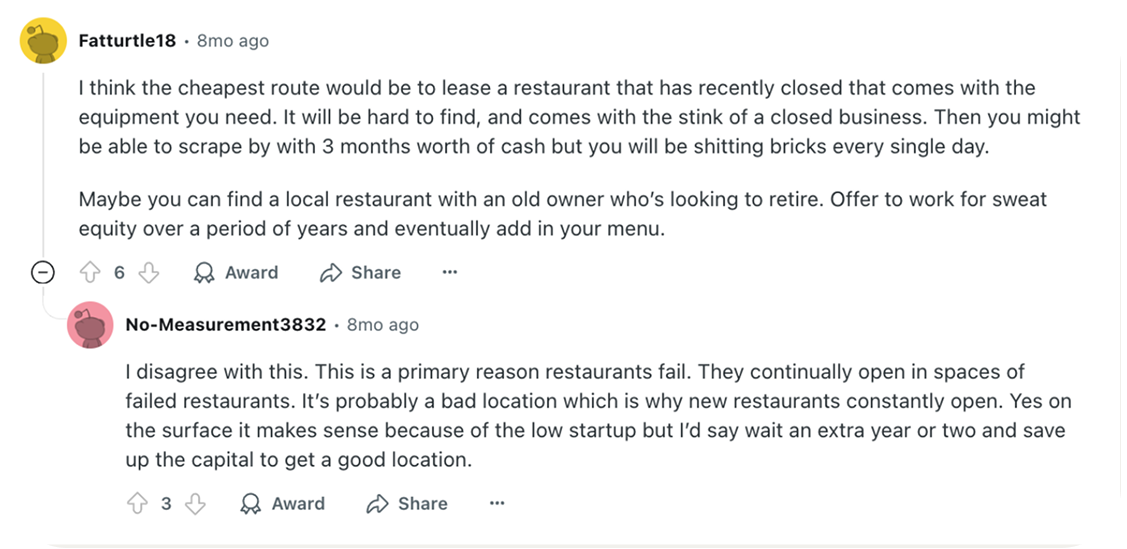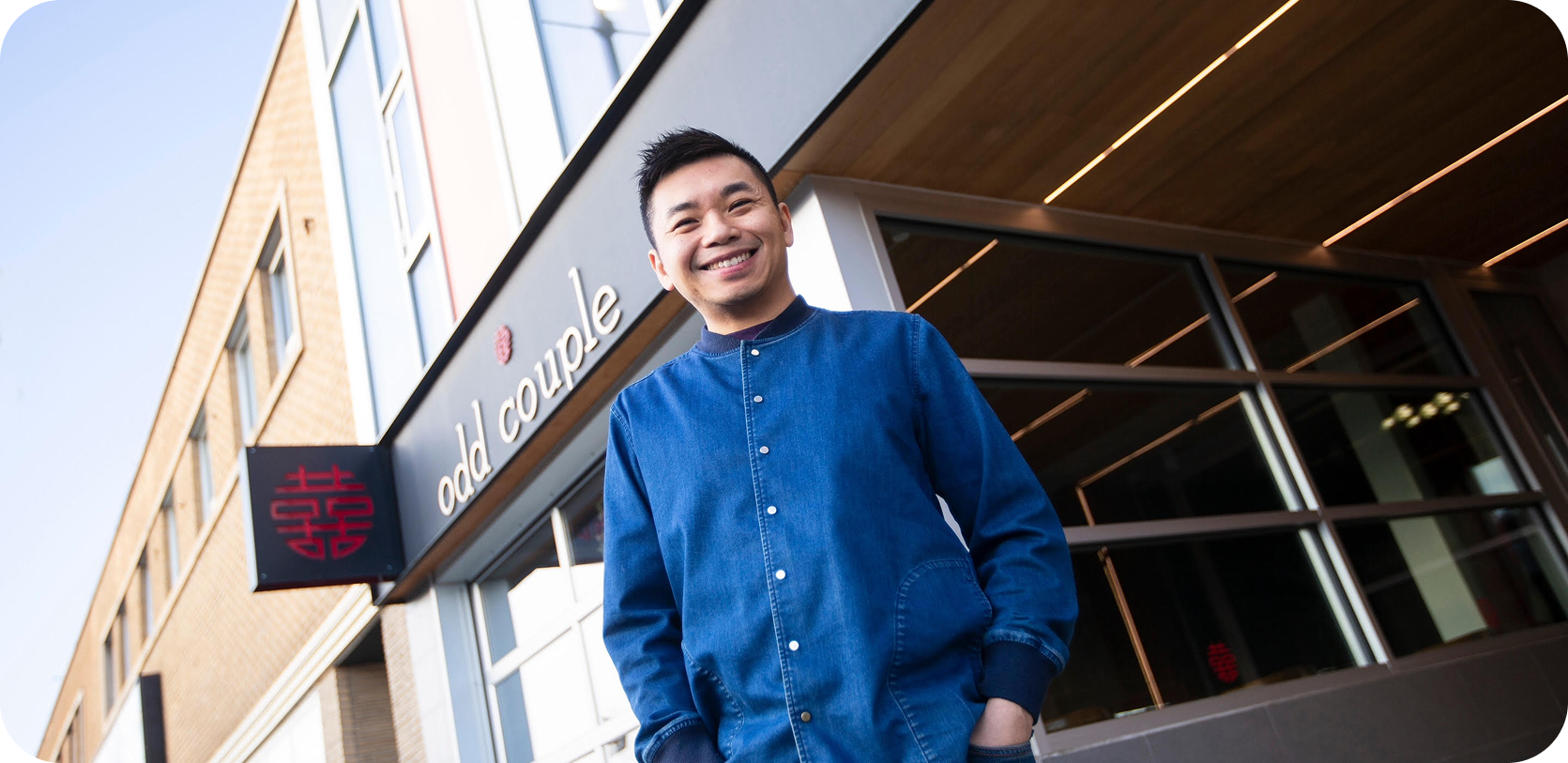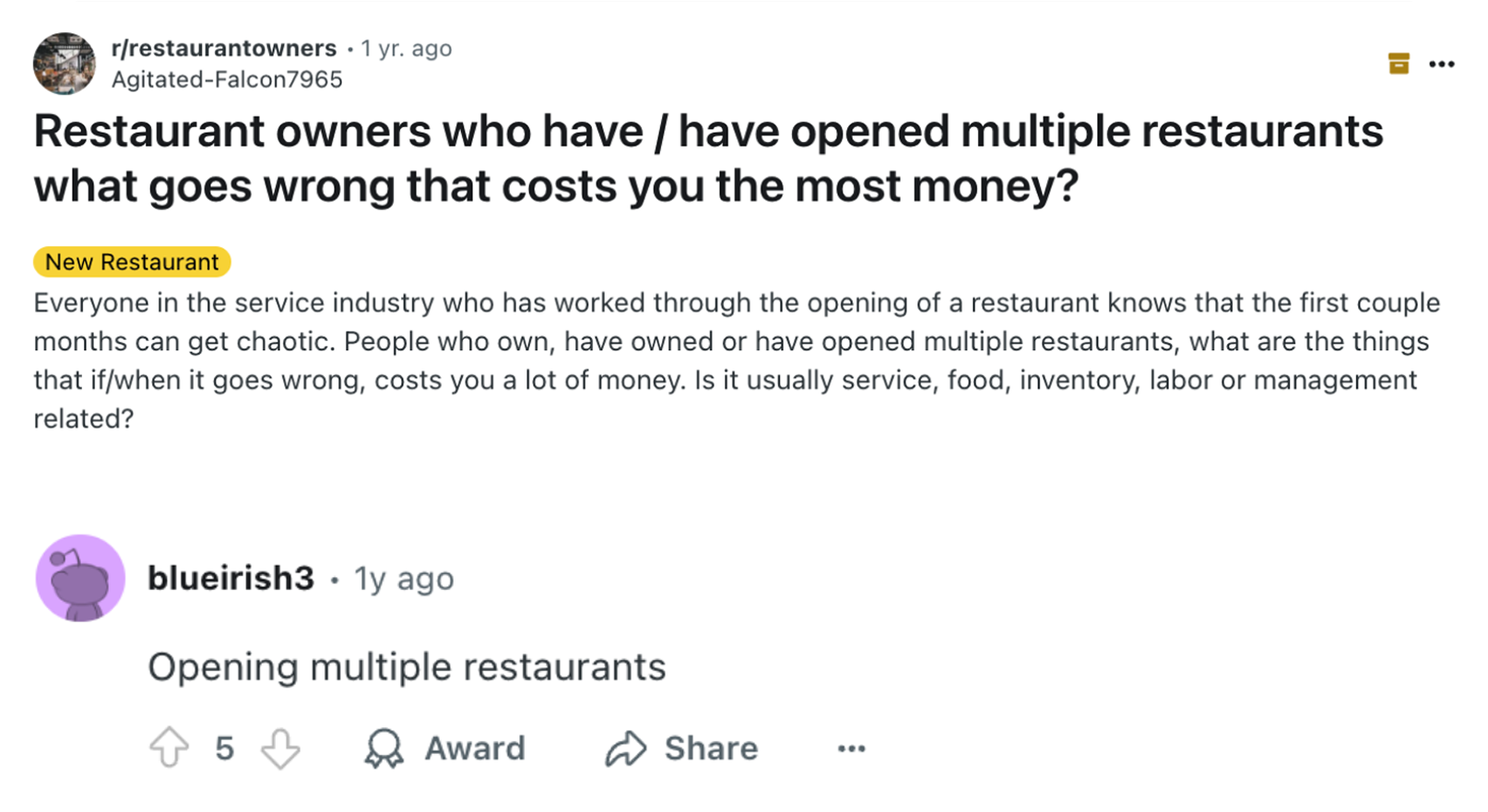|
|
|
|
|
In this edition, we’re talking restaurant expansion—when to make the leap, how to do it right, and what to watch for along the way. Whether you’re dreaming about growth or happy with one location, you’ll still walk away with ideas for building a stronger, smarter business today.
|
|
|
|
 |
Are you *actually* ready for expansion? |
 |
Cash, contracts, and cool tech |
 |
Real talk from those who’ve been there, done that |
|
|
|
|
*Multi-unit operators, every single day*
|
|
 |
QUIET ON SET
|
|
The thought of expanding locations might bring dollar signs to your eyes, but it’s important to first ask the big question: Are you actually ready?
Watch Sam Fung’s latest video covering everything you need to know before you open your next restaurant location.
|
|
|
Typsy also put together a quick five-step gut check. Nail all of these with a hard yes, and hey, maybe you are ready to do it all over again.
✅ Are you physically—and mentally—prepared to multiply the challenges?
✅ Can your first store fly without you?
✅ Do you have systems and processes in place to copy-paste?
✅ Are you rich enough (really, though)?
✅ Is there actually a market ready for what you plan to offer?
|
|
 |
STORIES FROM THE FLOOR
|
|
Say you have decided you’re ready to expand. Now comes the not-so-fun part: money (or rather, financing). Sure, using profits from your first spot would be nice—but that’s not always realistic.
Check out this Reddit thread where operators share tips on everything financing-related:
|
|
|
|
|
And for a full playbook on how to start from scratch or add your next one, check out our Restaurant Financing 101 guide.
|
|
 |
DEBATABLE
|
|
Q: Should you lease an existing restaurant to save money?
|
A quick debate from that same Reddit thread… while taking over a ready-to-go restaurant might seem like a no-brainer, it’s worth asking one looming question: Why is it up for lease in the first place?
|
|
|
|
 |
STORIES FROM THE FLOOR
|
|
“What I wish I’d known before signing a restaurant lease”—aka the mistakes you can skip.
Landing the right space is one of the biggest (and most expensive) parts of opening a restaurant. Even seasoned operators can get caught off guard. These lessons (and more) shared on LinkedIn by Lisa Lee, Managing Partner at Agnes and Sherman, are worth bookmarking before you sign on the dotted line.
🛠️ Assemble your task force – This includes a broker, lawyer, general contractor, architect, and technicians. Each one serves a different purpose, so don’t overlook any role.
🤝 Your broker = your MVP – A trusted broker knows the market, fights for you, and locks in three deal points: price per square foot, tenant allowance, and the rent commencement date.
⚖️ Lawyer up (the right way) – Commercial leases hide clauses you won’t see coming. Local expertise is key—don’t skimp on choosing one who will bat for your interests.
🔍 Inspect, inspect, inspect – Check the HVAC, plumbing, grease trap, and hood vent. You want brutal honesty from friends if possible. And if issues arise? Use them as leverage in a negotiation.
🚪 Be ready to walk away – That’s even from a space that looks perfect. A bad lease or bad landlord will cost you more in the long run.
|
|
 |
SURVEY SAID
|
|
Scaling up takes more than ambition—it takes the right tech. Yet less than 25% of multi-location operators consider themselves advanced tech users.
That gap signals a big opportunity.
A CrunchTime study of operators with 10+ locations found they use, on average, six different tools for back-of-house operations. Many plan to add or upgrade systems like:
- Business intelligence (63%)
- Inventory management (60%)
- Labor scheduling (56%)
But better tech adoption isn’t as simple as flipping a switch. As Mo Reshad, Restaurant Consultant and Founder of Preshift, notes in a Supy article, one common mistake is tying tech upgrades only to site count:
“It’s not just about how many locations you have. It’s about how complex your operations are becoming—how busy your sites are, how big your teams are getting, and how much data you’re managing.”
He advises looking at these three categories of tech for upgrades:
📦 Inventory management, like real-time food cost tracking and accurate stock control
👨🍳 Labor management, like forecasting vs. actual tracking and smart rota planning
💰 Finance and procurement automation, like supplier integrations and credit note matching
Related reading: We have a blog post on this very topic, where we talked to multi-unit operators about how they use tech to scale bigger.
|
|
 |
FOOD FOR THOUGHT
|
|
What about opening a second concept, instead of a second location?
It’s one thing to duplicate what already works. It’s another thing to switch it all up.
So, we also caught up with two multi-unit restaurant owners to find out why they chose to launch a second concept, instead of opening location number two.
|
|
|
🔥 Josh Bishop, Wildfire and Fork & Fire in Arizona
For Josh, the goal of opening Wildfire, his first location, was actually to support his barbecue food truck with a physical kitchen. But given that there was too much barbecue nearby, he went with everyone’s second favorite food: chicken wings. And when another barbecue joint closed down, he decided it was time to turn the Fork & Fire food truck into a physical location, too.
It came down to too much competition: “It was simply proximity… We’re a pretty small community… In that area, there were already two barbecue places.”
Read more about Josh’s story (and how 7shifts has supported it) here!
|
|
|
🍜 Andy Yuen, Odd Couple and SULU in Saskatchewan
For Andy, his second concept may have been new—but the space wasn’t. When the opportunity came to purchase an existing restaurant, the location and layout were just too good to pass up. And in many ways, creating SULU in the ‘new-old’ space made more sense than recreating Odd Couple.
Andy saw time and cost savings: “If you start from scratch, it would probably take at least a year. In a year, a lot of things change—the markets change so fast… We spent not an insubstantial amount of money to do a reno, but it should still be quite a bit less than if I were to start from scratch.”
Read more about Andy’s expansion journey here!
|
|
 |
STORIES FROM THE FLOOR
|
|
Before wrapping up, we also asked Josh and Andy for a few more insights on what it takes to run multiple spots. Here’s what they had to say:
💬 What are some challenges or considerations when managing teams across locations?
Josh: “Presence is so key in the industry… When the owner is there in the restaurant, or the general manager, it’s often different than when the assistant managers are there… There are a lot of little things—psychologically—that in a restaurant, the owner sets the precedent for… And with every restaurant that opens, that presence is diminished.”
Andy: “I’m really fortunate to have two really good managers who truly care about our restaurants, just as if it’s theirs. That’s really what to do… If you have a team of people who are truly adaptable and genuinely care about your space, that’s the most important thing.”
💬 What advice would you give operators looking to expand with more locations?
Josh: “If you can’t walk away from your current restaurant for a month, two months—and truly believe that it’ll operate as well or better than with you in it—you’re not ready to take on that because it’s going to take a couple months of complete blindness to your current operation to open a second location.”
Andy: “I watch a lot of NBA basketball, and I love the Raptors—what I see in them is that just because you’re not going for a championship this year, doesn’t mean you’re not going to do any deals if there are good deals… So don’t pass up on good opportunities even though times are tough. And the only other thing I’d say is just be really flexible in this market. Especially for small operators like us, the only strength that we really have is to be flexible.”
|
|
 |
HEARD!
|
|
Some rapid-fire tips from multi-unit operators who’ve been there, done that—and scaled successfully.
🎧 Garrett Mills, Partner of Uncommon Brands, on the biggest challenge for expanding founders:
“ In terms of what kind of challenges our founders face, as you break out of that one to two-unit concept to become a multi-unit threat, I think it comes down to many founders’ hesitation to give up control.”
“ Running one restaurant is very different than running three, and it’s obviously way different than than running ten. And I think the evolution of that depends on a founder’s ability to find people they trust and really tweak the business model to be more GM-driven.”
🎧 Ellen Yin, Founder of High Street Hospitality, on the perks of sharing staff across stores:
“We love to cross-pollinate. Especially if you are in the management track, sometimes, it’s easier to manage people in a place where you haven’t worked with them… or somebody has a skill set that we feel could be developed and would be a great fit for [another restaurant].”
“ Having people cross-pollinate also helps us ensure that our culture can be cross-pollinated. We’re opening a new concept… we are having team members from our other concepts participate there to ensure that we inoculate that culture into the new location.”
🎧 Amelie Kang, Owner of MáLà Project NYC on how restaurant roles change as you expand:
“I was doing the day-to-day operations. I would do service. I would be the expo. I would be on the floor and bussing tables… But since day one, I knew that we needed to grow in order to have the team grow. We had to be physically bigger in order to build a bigger platform for my team… I was prepared to grow my team like that.”
“So now, having the fourth location and going into bigger expansion, my core team is all my original employees. And we all grew together from the floor doing service to now having to work in a startup mode… figuring out how do you form a team and how to function like a startup—rather than a restaurant, which is a different format of working.”
|
|
 |
BECAUSE YOU COULD USE A LAUGH
|
|
|
|
Jokes aside, this thread is still full of lessons worth taking seriously.
|
|
 |
À LA CARTE
|
|
|
|
|
|
